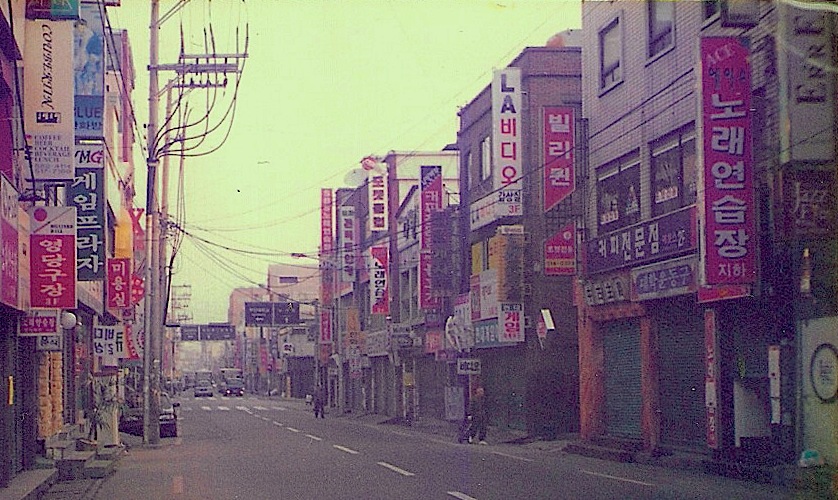In Korea: ‘Ich Bin Ein Sidewlker’
By Rolf Potts
American Defense Secretary William Cohen recently called the Korean peninsula “one of the dangerous places on earth.” Considering that I live on the very tail-bone of that peninsula, I should probably be worried.
I’m not.
After all, South Korea is building sidewalks.
To fully appreciate the momentousness of this development, one must stroll the streets of Pusan at rush hour. As the only major Korean city not overrun by the communists 45 years ago, Pusan was never systematically replotted according to 20th-century standards.
Thus, Pusan streets still follow ancient village paths — flowing as crookedly and arbitrarily as a plateful of the local jop-chae noodles. Add to this equation an urban population of some 45 million hell-bent workaholics and you end up with some of the worst traffic problems in Asia The per capita traffic-death rate here topped the world charts in 1994 and hasn’t slipped much since.
Amidst this madness, pedestrian zones are marked by a thin and dubious yellow line at the edge of the asphalt. Four millimeters of dingy road paint is all that separates safe passage from a chaos of overused horns and under-heeded speed limits. Walking the streets is an act of faith. And while Simon Peter once found that a relatively small amount of faith allows a man to walk on water, he was never faced with the more relevant prospect of navigating intersections in a city where 15.5-ton Hyundai buses careen four abreast down streets originally designed for oxcarts.
I realize that our defense secretary was not talking about traffic when he made his grim statement. Korea has been a volatile place for nearly 50 years. The war that raged here two generations ago is technically not over. Just this summer there have been minor clashes in the DMZ, revelations of chemical weapons factories near Pyongyang, and rumors of an impending desperation invasion by the North’s food-strapped million-man army.
In the event of such an invasion, American civilians living in Korea are advised to report to the nearest U.S. military base for evacuation. I know the route by heart.
I can only hope, for my own safety, that the sidewalks are finished by the time I need to use them.
Before I came to Korea, I never realized I would come to miss something so forgettable as sidewalks. I figured I’d miss things like central air-conditioning, my dog or Taco Bell. But the taste of a bean burrito is a small pleasure compared to the feeling I got last month when the fading yellow paint bordering the street from my home to the university district was replaced with a green-tiled sidewalk. It was like watching Allied troops march into Paris in 1944. I had to stop myself from throwing roses at the cement trucks.
I’ll admit that sidewalks do little to defuse the seriousness of Cohen’s warning. Up where South meets North, half-a-century of blustery martial posing drags on. In the DMZ border village of Panmunjom, South Korea flies a bafflingly huge 300-pound flag atop a 100-meter pole. Not to be outdone, the North Koreans have erected a 600-pound flag on a 160-meter pole.
But such Cold War symbols have long since lost their punch. When the Berlin Wall fell in 1989, the rhythms that defined an entire age faded into a soundless waltz of statistics, anecdotes and epitaphs. What remains here in Korea is a symbol of a symbol — an asterisk in the record books: a large, decaying Museum Of Ideas That Didn’t Work. Regardless of whose pole is bigger, nothing along the DMZ — including the DMZ itself — can be torn down with any apocalyptic resonance.
Consequently, the victories and euphorias of this present age have become humbler, more immediate. Whatever becomes of North Korea’s threat, I will enjoy the reverie of symbolic triumph where it reveals itself — even if it is literally underfoot
Ich bin ein sidewalker: I walk my way to work this week with a sense of peace, and hope that history continues to ignore me.

